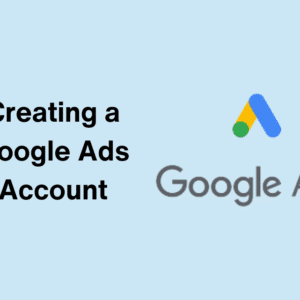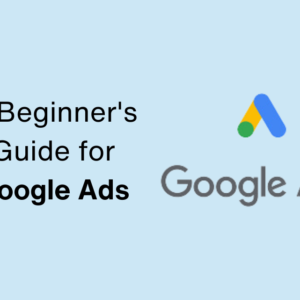Introduction
In the realm of online advertising, Google Ads serves as a potent tool for businesses aiming to expand their digital presence. Yet, for newcomers, the labyrinth of Google Ads terminologies can be intimidating. To unlock the full potential of Google Ads, one must first grasp its language. This guide endeavors to simplify Google Ads terminologies, providing beginners with a clear understanding of pivotal terms and concepts necessary for running successful ad campaigns on Google.
Ad Campaign Structure
Campaign
At the top of the organizational hierarchy lies the campaign, constituting a collection of ad groups, ads, and keywords tailored to a specific advertising goal. Campaigns grant advertisers control over budget allocation, targeting settings, and other overarching campaign parameters.
Ad Group
Nestled within campaigns, ad groups serve as thematic clusters housing related ads and keywords. Organizing ads and keywords into coherent ad groups enhances ad relevance and performance, streamlining campaign management.
Ad
The creative soul of a Google Ads campaign, an ad springs to life when triggered by pertinent keywords or targeting parameters. Typically comprising headlines, descriptions, and display URLs, ads may incorporate extensions such as sitelinks and callouts to amplify user engagement.
Keywords and Targeting
Keyword
Keywords serve as the gateway to triggering ads in Google’s search results. Advertisers must strategically bid on relevant keywords that align with the search queries of their target audience to maximize ad visibility.
Negative Keyword
To ward off irrelevant traffic, advertisers deploy negative keywords, instructing Google to exclude their ads from certain search queries. This strategic move enhances campaign efficiency by filtering out undesirable clicks.
Targeting
The bedrock of ad precision, targeting encompasses criteria utilized to reach desired audience segments. Google Ads offers a plethora of targeting options, spanning location, demographics, devices, and audience segments, ensuring ads reach the right eyeballs.
Bidding and Budgeting
Bid
Bid amounts denote the maximum sum an advertiser is willing to pay for a click or specific action. Bids wield influence over ad placement and visibility in Google’s search results, necessitating strategic bidding to optimize campaign performance.
Cost-Per-Click (CPC)
CPC represents the fee incurred by advertisers each time a user clicks on their ad. Adhering to a pay-per-click model, CPC is determined by bid amounts and keyword competitiveness, ensuring advertisers only pay for actual engagement.
Cost-Per-Thousand Impressions (CPM)
Ideal for bolstering brand visibility, CPM entails advertisers paying for every 1,000 impressions garnered by their ads, regardless of click-throughs. Widely used in display advertising campaigns, CPM aims to heighten brand exposure and awareness.
Budget
A campaign’s financial lifeline, budget caps dictate the maximum expenditure an advertiser is willing to incur within a specified timeframe. By setting daily or campaign-level budgets, advertisers exercise fiscal control and prevent overspending.
Ad Performance Metrics
Click-Through Rate (CTR)
CTR gauges the percentage of users who click on an ad after viewing it. An elevated CTR signifies ad relevance and user engagement, serving as a barometer for ad effectiveness.
Conversion Rate
Conversion rate quantifies the percentage of users who fulfill desired actions post-ad-click, be it making a purchase or submitting a form. A high conversion rate signifies campaign efficacy, underlining the ad’s ability to drive valuable actions.
Quality Score
Google’s Quality Score evaluates ad and keyword relevance, landing page experience, and expected click-through rates. A higher Quality Score translates to favorable ad positions and reduced CPCs, incentivizing advertisers to prioritize ad quality.
Impressions
Impressions tally the number of times an ad appears on Google’s search results or partner websites. While indicative of ad visibility, impressions do not necessarily equate to user engagement.
Ad Position
Ad position denotes an ad’s placement relative to competitors on Google’s search results pages. Influenced by bid amounts, ad quality, and relevance, higher ad positions typically yield greater visibility and click-through rates.
Ad Extensions and Formats
Ad Extensions
Ad extensions furnish additional information within text ads to enrich user experience and encourage interaction. From sitelinks to callouts, ad extensions amplify ad relevance and drive user engagement.
Responsive Search Ads (RSA)
Embracing machine learning, RSA enables advertisers to craft ads with multiple headlines and descriptions. Google’s algorithms then optimize ad performance by testing various combinations, ensuring maximum efficacy.
Display Ads
Harnessing the visual allure, display ads adorn websites within the Google Display Network. Versatile in form and function, display ads cater to diverse marketing objectives, from boosting brand awareness to driving website traffic.
Conclusion
Navigating the intricate realm of Google Ads demands fluency in its terminology. By acquainting oneself with the foundational terms outlined in this guide, beginners can embark on their Google Ads journey with confidence. Whether launching a maiden campaign or refining existing strategies, mastery of Google Ads terminology serves as the cornerstone for unlocking advertising success in the digital sphere.
Also Read: Unlocking the Power of Google Ads: A Beginner’s Guide for Google Ads








This Post Has One Comment